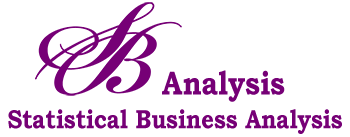Stages of Statistical Analysis at Your Firm
Typically when doing an analysis of your firm’s data, you will want to follow a systematic approach as described here.
Stage 1: Consultation
Since you are the one at your firm that has an understanding of statistical analysis, management will come to you seeking advise on how to solve a particular problem, or simply to gain insights on the firm’s data.
You will ask many questions, in order to completely familiarize yourself with the details of what is needed of you. This is important for you to choose the appropriate statistical technique(s) to accurately analyze the data.
Stage 2: Choosing the Appropriate Statistical Method
This is the primary goal of The Journal of Applied Statistics. The journal is here to equip you, so you will understand what statistical technique(s) to use, and which ones would not be appropriate for the specific project you are involved in.
Month after month you will learn various methods of analysis, and equally important, when said methods should and should not be used.
Stage 3: Data Collection
This may be as simple as querying the firm’s database, or it may involve collecting data from scratch – measuring, weighting, counting, etc.. If the latter, you will need to make it clear as to precisely what you need in order to do an accurate analysis.
For example, if you are doing a completely randomized study, you will need to show the data collectors how to ensure the data set will be at random – see Journal Issue 3.
Stage 4: Data Scrutiny
Once you have been given the data, carefully look it over for any anomalies, outliers (Journal Issue 2) or evidence of an inaccurate measurement. Can that really be the birthweight of a female baby? Experienced analysts become remarkably good at “sniffing out” anomalies in a table of data.
Stage 5: Analysis
This is where the fun really gets ramped up… Similar to the medium sized firm, the analyst (you) will have many tools in your toolbox. You will use, one, two or several for each project that you are doing, and again choosing only those that are appropriate for your specific case.
Stage 6: Interpretation
Sadly, success isn’t usually handed to us, it takes work. That being said, the results you get won’t say, in a loud booming voice, THIS IS THE DECISION TO MAKE. No, typically the analysis will give you a set of numbers – a variance table, p-value, probability of occurrence, etc. As the analyst, it is your job to interpret these numbers, as to which are pertinent to the original problem, and to make a more informed decision.
Use the above algorithm, not only in your statistical analysis, but for any challenging decision you face.
